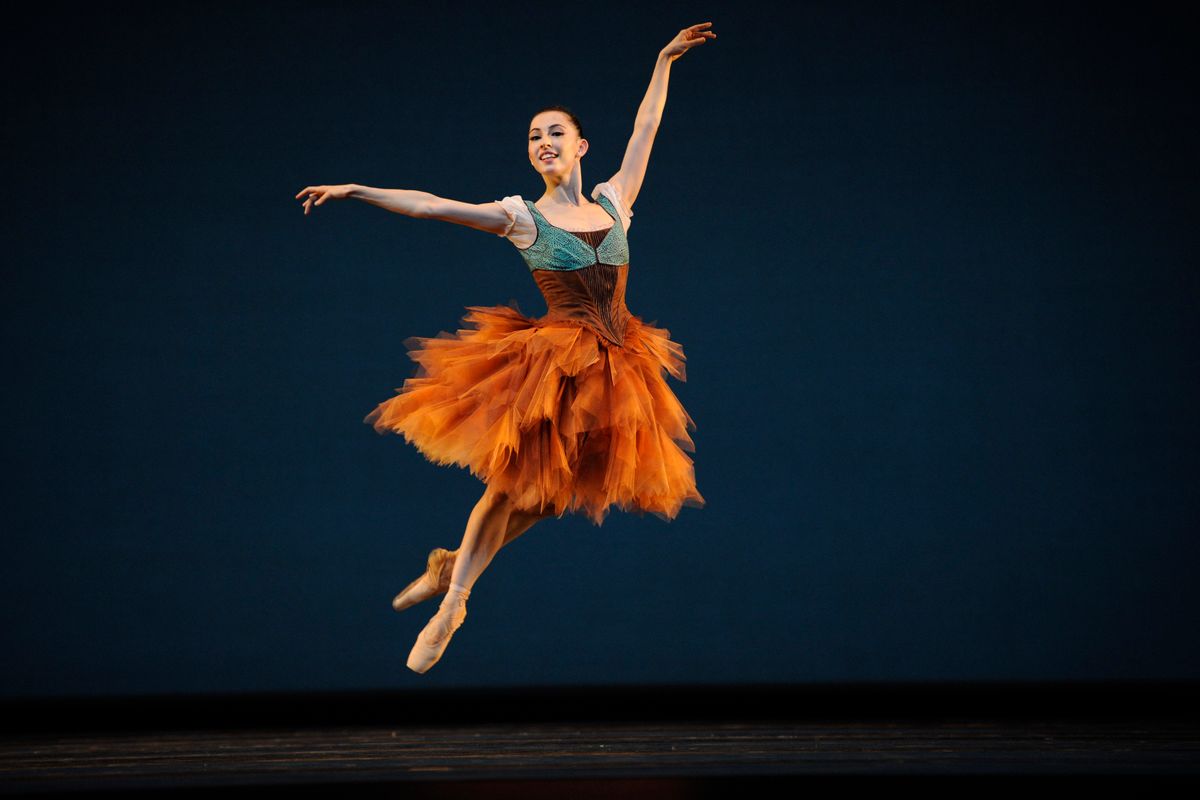Taking Control: Dana Genshaft Reflects on her Unique Training Path
This story originally appeared in the August/September 2015 issue of Pointe.
By Dana Genshaft, as told to Nicole Loeffler-Gladstone
My earliest training was at the School of American Ballet, from ages 9 to 11. But I received the bulk of my training at the Kirov Academy of Ballet in Washington, DC, and I still consider myself to be a Russian-trained dancer.
When I was 16 years old and approaching graduation, I felt that I needed more than Vaganova technique—which is very clean, very black-and-white—if I was going to be an employable dancer. I wanted more in order to be marketable. So, I auditioned for the Paris Opéra Ballet School and spent a year there.
As a student I would watch a lot of performances and see dancers I admired—that was how I first got the idea that POB might be a good place for me. The power I saw behind the female dancers was impressive to me. I was attracted to the school’s emphasis on quality and classicism, but also speed and precision. The dancers there have incredible footwork; I have articulate feet and I felt that my body type suited the company.
I saw online that they were accepting international students, which was somewhat rare, so I wrote a letter and sent a video—that was basically it. I spent some time before my video audition preparing with François Perron, the artistic director of the French Academie of Ballet in New York City. I also took a class with Claude Bessy (then the director of the POB School), who was in NYC by chance.
 Genshaft performing Balanchine’s “Divertimento No. 15.” Photo by Erik Tomasson, Courtesy SFB.
Genshaft performing Balanchine’s “Divertimento No. 15.” Photo by Erik Tomasson, Courtesy SFB.
I didn’t realize that living abroad and going to the POB School would be so hard. You have to yield to the institution and the layers upon layers of rules. The hierarchy is profound. No one was hostile toward me, but I was deeply lonely. That said, the experience in the classroom was really fantastic.
With French training, the lower half of the body is very dynamic and energetic and has an attack to it. The teachers would almost sing the corrections along with the music so that you get the correct dynamic. And in Paris, it’s not about what they teach but how they teach it. They use very simple corrections, but you see those corrections play out at every technique level. That’s why, if I had the chance to do it again, I would have gone sooner. I had thought of POB as a finishing school, but it’s actually better for foundations. I was able to cognitively immerse myself in the training, but I didn’t have as much time as I wanted to truly embody it.
After my year in Paris, I came back to the U.S. and spent the next year tying everything together. I took lots of open classes, especially with Wilhelm Burmann at Steps on Broadway in NYC. I also took private lessons with Fabrice Herrault, a French teacher. A professional career asks so much of you and nothing exemplifies that better than taking open classes in NYC, where the dancers and teachers are so different from each other. That was my real finishing year after being in a strict academic environment.
After that, I started auditioning. I was almost 18 when I came to San Francisco Ballet, and I had immediate chemistry with the company. I didn’t understand why at the time, but I knew it was the right place for me. Now, it makes sense: SFB dances everything and works with everyone. No two dancers are alike.
You have to remember that training is just tradition and a point of view. Each of my choices were made from an instinctual place. I picked out the things that I thought were beautiful and right, and that’s how I’ve meshed all my various influences. For example, I’ve aimed to keep the footwork from the French method, the expressive port de bras from my Russian training and Willy Burmann’s way of distributing weight over the supporting leg.
These training methods each have a value system and a set of goals. I admire them and work toward them. But it’s important to find your own voice, and that comes down to developing your sense of taste. Ask yourself what kind of dancer you want to be. I was able to hone my strengths at SFB—which happened to be quite contemporary—and the company valued my melting pot of training. It became my true artistic home.
Editor’s note: Dana Genshaft retired from San Francisco Ballet in May 2015.





